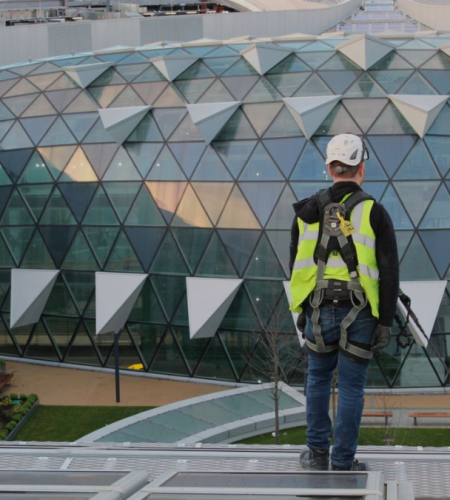Outdated access systems are more than just a minor inconvenience, they’re an operational liability. From slowing down your workforce to driving up energy bills, they can quietly erode your facility’s efficiency and safety. In an era where smart logistics and automation set the pace, clinging to yesterday’s solutions can hold your entire operation back.
Take elevators, for instance. What was once considered a luxury in industrial spaces has now become a vital component of streamlined vertical movement. In facilities still operating manually or with dated lift systems, bottlenecks are common. Precious minutes are lost with every haul.
Today’s elevator solutions are built with sensors, advanced load handling, and real-time responsiveness, allowing materials and personnel to move with far greater precision. With smarter coordination and energy-conscious operations, modern elevators free up your resources and help reduce unnecessary delays. If your vertical access still runs on legacy systems, it’s a clear sign your infrastructure may be falling behind.
What’s the Real Cost of Being Outdated?
Lagging behind isn’t always loud. It can show up subtly, in longer turnaround times, increased maintenance calls, or inconsistent internal temperatures that impact your stored inventory. Often, the core culprit is overlooked, which are inefficient entry and exit points.
A mid-level access feature that often escapes attention is the sectional garage door. At first glance, it seems like a basic fixture. But in truth, it’s a critical component of any efficient facility. Older garage doors that lack proper insulation or automated controls can leak energy, delay vehicle flow, and open up security vulnerabilities.
Modern sectional doors, on the other hand, are engineered to offer both insulation and intelligence. They minimize air transfer, help manage internal temperatures, and come with remote access or touchless functionality. These are all essential for industries that deal with temperature-sensitive goods, high-volume traffic, or need airtight security.
Holding on to an aging sectional garage door is more than a maintenance issue, in fact, it’s a performance drain. Each minute spent waiting for a door to open, or each degree lost due to poor insulation, adds up over time.
Where Precision Meets the Pavement
At the heart of any logistics or distribution operation is the ground-level flow of goods. If you’re loading and unloading zones still rely on makeshift ramps or outdated manual bridges, your team may be losing both time and safety. Here is where dock levelers come to play, being the unsung heroes of efficient ground operations.
Dock systems, now, are designed to eliminate misalignment, reduce risks, and accelerate the loading process. Whether they are hydraulic, mechanical, or air-powered, advanced dock levelers provide a safe and seamless connection between truck and dock. They adapt instantly to different truck heights. These come with features like anti-slip surfaces, automatic positioning, and built-in shock absorption. Not only does this boost speed, but it also protects workers from strain and accidents.
Facilities without modern dock levelers often see increased loading damage, slower cycles, and more frequent worker injury claims. That’s not just inefficient—it’s a liability.
The Hidden ROI of Smarter Access
Facilities that update their access systems often discover a chain reaction of benefits. Reduced energy consumption, better resource allocation, improved staff morale, and stronger safety records are just a few of the long-term payoffs. With smart access solutions in place, your operations become more agile, meaning that they are able to adapt to volume changes, seasonal demands, and unexpected disruptions with ease.
Moreover, modern systems are designed to integrate. For example, your elevator can coordinate with your inventory software, sectional doors can be operated remotely, and dock levelers can signal when your shipment is ready to leave. This level of coordination wasn’t possible a decade ago, but it’s essential today.
Recognizing the Signs You’ve Fallen Behind
How do you know when your access systems are due for an upgrade? Here are a few red flags:
- Increased maintenance costs with aging components
- Rising energy bills despite stable operations
- Delays in loading/unloading times
- Difficulty meeting industry compliance or safety audits
- Feedback from staff about manual workarounds
If any of these sound familiar, it’s time to reevaluate what’s really driving or dragging your facility’s performance.
The Path to Progress Starts with a Door
Making the switch to smarter access isn’t just about keeping up with industry trends. It’s about reclaiming efficiency that’s been slipping through the cracks. From elevators that transform vertical mobility, the thermal control of a sectional garage door, and the precision and safety offered by dock levelers, every improvement adds up.
Facilities today are under pressure to perform faster, cleaner, and safer than ever before. The competition isn’t waiting, and neither should you!

